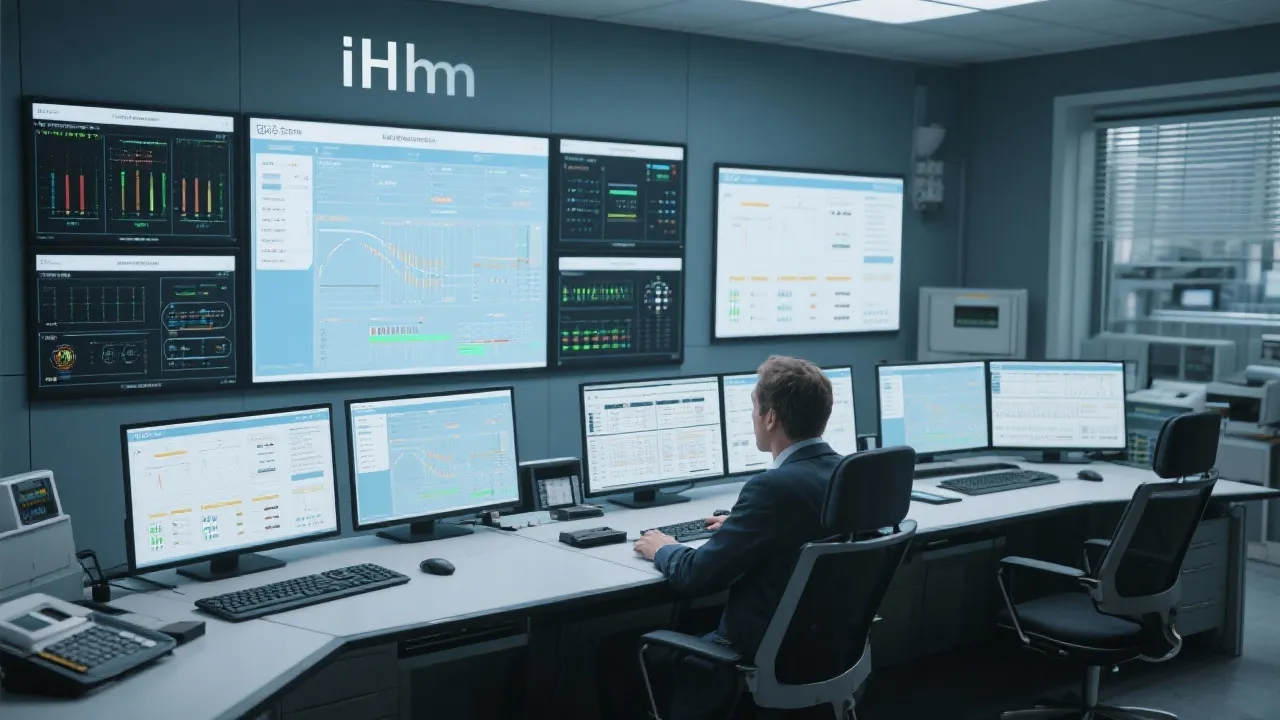IHM SCADA systems play a critical role in industrial automation by enabling efficient monitoring and control of processes. These systems integrate hardware and software to manage operations across various sectors like energy, manufacturing, and water treatment, offering real-time data visualization and operational insights.

Supervisory Control and Data Acquisition (SCADA) systems, combined with Human-Machine Interface (HMI) technologies, form robust platforms known as IHM SCADA. These systems are designed to facilitate advanced control and monitoring of industrial processes, making them indispensable in sectors such as energy, manufacturing, and utilities. By leveraging real-time data, organizations can enhance efficiency, reduce downtime, and optimize resource utilization. Additionally, the modern landscape of industrial operations has transitioned from traditional manual systems to automated systems embraced prominently by IHM SCADA. This evolution not only improves operational reliability but also fosters a data-driven culture where decision-making is substantiated by comprehensive analytics and impressive data visualization.
IHM SCADA systems are composed of several key components, each playing a critical role in the functionality and effectiveness of the system:
The integration of IHM SCADA systems significantly increases the efficiency of industrial operations. By offering real-time monitoring and data analytics, these systems help in proactive decision-making and troubleshooting. Industries such as water treatment, electricity distribution, and manufacturing heavily rely on IHM SCADA for its timely insights and minimal error propagation. For example, in the manufacturing sector, SCADA systems can monitor production lines incessantly, ensuring that any deviations from expected performance parameters are detected and addressed immediately. This proactive approach curtails the risk of larger operational issues that could lead to substantial financial losses. In addition, this system enhances energy efficiency in industrial settings by optimizing processes and reducing waste, which is essential in an era where sustainability is becoming increasingly important.
Investing in IHM SCADA systems offers multiple benefits:
IHM SCADA systems are embedded in a wide array of industries, each utilizing the technology to meet specific operational demands:
| Industry | Application | Key Benefits |
|---|---|---|
| Energy | Grid management and optimization. | Reduced outages and improved efficiency. |
| Manufacturing | Process automation and quality assurance. | Higher productivity and reduced waste. |
| Water Management | Network monitoring and management. | Consistent supply and leak management. |
| Oil & Gas | Refinery operations and pipeline control. | Enhanced safety and environmental compliance. |
While IHM SCADA systems offer unprecedented advantages, they also face challenges such as cybersecurity threats and integration complexities. As industrial operations become increasingly interconnected, they expose themselves to potential cyber-attacks, necessitating stringent security measures. Organizations must invest in robust security protocols and continuous system updates to mitigate risks effectively. Furthermore, with various legacy systems operating concurrently, integrating newer SCADA systems can be challenging. Organizations must navigate differences in communication protocols and data formats, which may require substantial time and financial investment.
In the future, advancements in Artificial Intelligence (AI) and the Internet of Things (IoT) are expected to further enhance the capabilities of IHM SCADA. Incorporating AI-driven analytics can refine predictive maintenance strategies, facilitate smarter decision-making, and provide even more sophisticated control solutions. Additionally, IoT devices can expand the data that SCADA systems collect, enabling a more comprehensive view of operational efficiency and potential improvements. This progression towards highly interconnected, intelligent systems will fundamentally transform how industries operate, making them more efficient and resilient.
Moreover, the emergence of cloud computing offers organizations the ability to store and analyze vast amounts of data. This paradigm shift allows companies to access their SCADA systems from anywhere, improving collaboration and decision-making speed. As a result, on-premises limitations regarding hardware capabilities become obsolete, and organizations can easily integrate cutting-edge technologies that further enhance operational efficiency and insight.
Explore the Tranquil Bliss of Idyllic Rural Retreats

Ultimate Countdown: The 20 Very Legendary Gaming Consoles Ever!

Affordable Full Mouth Dental Implants Near You

Discovering Springdale Estates

Embark on Effortless Adventures: Unveiling the Top in Adventures Made Easy Outdoor Equipment

Unlock the Full Potential of Your RAM 1500: Master the Art of Efficient Towing!

Dodge Ram: Redefining the Future of Full-Size Trucks with Unmatched Power and Innovation

Get New Phones Without Plans Easily

Smart Strategies to Slash Costs on Your Roof Replacement Endeavor
